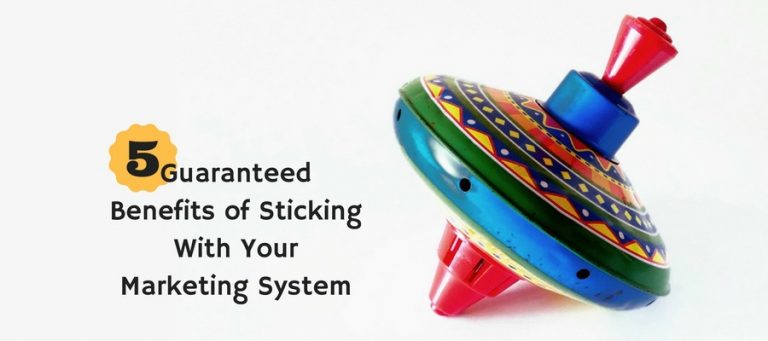How To Build Brand Affinity During COVID-19
The devastating effects of COVID-19 can be felt far and wide as families and businesses contend with not only the loss of life but the financial strain of a shuttered economy. So what does this mean for companies and brands? Your first instinct may be to hunker down and drop what you deem “non-essential.” But marketing is essential, and planning your exit from the pandemic will determine your brand’s survival rate.
The key to that survival is engaging your audience. A recent survey shows that the majority of consumers want brands to reach out during the pandemic, but in a way that reinforces community and solidarity:
- 77 % of consumers want advertisers to talk about how brands are helping out with everyday life
- 75% of consumers want brands to keep them in the loop about their efforts to “face the situation”
As the world turns inward, brands who take the time to understand their customers and speak to their values will reap the benefits of building long term relationships – a concept known as brand affinity, all while keeping their products and services top of mind.
In this guide, we’ll discuss the benefits of crafting a messaging strategy that communicates empathy and expertise, and provide you with three effective ways to build brand affinity that outlives the pandemic.

Tip 1: Use “Social Listening” to Personalize Brand Messages
While social distancing mandates that we stand six feet apart, virtual tools have made the world feel much closer. From Zoom meetings to Twitter Chats, Facebook groups to Tik Toks, consumers are allowing unprecedented access into their lives. Your audience is sharing their fears, hopes, likes, dislikes, and opinions in real-time – giving you unfettered access to a wealth of information.
Monitoring their digital activity in a systematic fashion, a process known as “social listening”, is a great way to use this intel to create more relevant, personalized brand messages, especially as the COVID-19 pandemic evolves.
What the Data Tells Us:
Sprout Social recently analyzed Twitter messages around COVID-19 and released stats about social activity in March, some of which are noted below:
- There were 13.3 million social messages talking about quarantine policies and social distancing
- Digital messages about helping others grew by 1,174%, resulting in 19.5 million messages throughout the month
- There was a 67% negative sentiment in digital conversations about buying in bulk
Companies can be equally attuned to what their audiences are talking about during the pandemic by adopting processes geared towards listening and learning.
How Can Your Brand Adapt:
- Use tools like Google Trends to gain insight into trending COVID-19 health concerns. Use these insights to guide content creation and align brand messages with your customers’ thoughts and concerns.
- Deploy “social listening” software to crawl through your social media platforms, blog comments, and brand keyword mentions to assess the reach of your brand and underlying consumer sentiment. Need help? Check out this list of free social listening software to get started.
- Ask account managers and sales teams to note changes in customer communication related to COVID-19. Use these insights to inform ad campaigns and sales pitches, as well as improve products and services. Most importantly, use this intel to meet the needs in the market and alleviate anxiety surrounding the pandemic’s impact on the quality and turnaround time of your products and services.
Tip 2: Connect With Customers Through Authentic Brand Stories
Consumers are craving connection and comfort, and brands that champion compassion authentically during this time will not only weather the storm but build a faithful following over the coming months. Brand storytelling has the power to humanize your brand. In this case, it demonstrates that your business is rooted in people rather than profits, an important distinction as consumer culture shifts from individualism to collectivism.
What the Data Tells Us:
- 56% of consumers are pleased to hear about how brands are helping communities (4A’s, March 2020)
- 70% of consumers would like brands to “offer a reassuring tone” (Kantar, March 2020)
How Can Your Brand Adapt:
- Articulate your brand story in a way that’s authentic and memorable. What are your values and how are they being demonstrated in the world? Brainstorm ways to repackage what you do and how you do it into content that tactfully touts your expertise through the story of a satisfied customer.
- Highlight the relationships you’ve forged with customers and clients. Remember, products and services are commodities, transactional at best. But long-standing relationships are differentiators. According to the Advertising Research Foundation, “Your campaign should connect to your core. Linking to your central brand proposition makes for an ownable and differentiated campaign.”
- Use language that is a reflection of your brand voice – an extension of your personality. But be sensitive to current events. Avoid using insensitive words that may come across as aggressive or tone-deaf. For example, stay away from phrases like: “Take Advantage of Low Prices Now!” Consider “Let Us Help You Get Back on Track” instead. Nesting your messages in supportive language shows solidarity, and acknowledges the impact COVID-19 is having on people’s lives.
Tip 3: Drive Customer Engagement Through Email Marketing
Online activity has soared during the quarantine, including email marketing. Despite the proliferation of social media, more and more consumers are communicating via email – giving organizations a great opportunity to reach them cost-effectively through owned media channels.
What the Data Tells Us:
- Since March 9, 2020 the average weekly email subscription rate has increased 34.9% (MailerLite)
- E-commerce purchases through emails have risen by 96.7% (MailerLite)
- In March, authors and online courses saw the largest email growth with sender volume increasing over 45%(emailmonday).
Copywriting Tips: Do’s and Don’ts of Crisis Management Copywriting
Use: “contribute,” “connect,” “play a role,” “navigate,” “cope,” “respond”
Do not use: “capitalize,” “advantage,” “offer,” “gain,” “profit”
Be careful with: “opportunity,” “make the most”
Kristen McCormick, Content Marketing Manager at ThriveHive:
How Your Brand Can Adapt:
The downside of rising email subscription rates is competition. Just as you send more emails, so will other brands. The loser – email subscribers. They get inundated and tune out, especially now when everybody’s got an angle. To avoid being cast into cyber oblivion, only send emails that add immediate value to your customer. They will appreciate content that educates them, keeps them in the loop, or just makes them smile, and reward you with a good open rate. Tips to consider:
- Flesh out email newsletter ideas based on the social listening exercises you conduct.
- Make sure you’re providing your audience with opportunities to sign-up for your email list on each marketing channel (website, social media, blogs, etc.).
- Audit your content on all digital channels to ensure pop-ups and calls-to-action are easy to find and don’t conflict with the crisis copywriting guidelines listed above.
- Steer clear of content overly saturated in COVID-19 rhetoric. Though it may seem counter-intuitive, people are primarily seeking value from brands right now. They’re being bombarded with COVID-19 mentions and hashtags, so only mention it specifically if it is relevant to communicating an action.
- Use your email campaigns to communicate how you’re managing your COVID-19 response, not exploiting it. Include text rooted in relationship building steeped in empathy and solves problems for your readers. In time, this will endear you to them and open the door for sales opportunities down the road. Need ideas? Check out these COVID-19 email samples for inspiration.
- Let customers know you’re listening. Send a simple survey asking how your business can help, what people love about your brand, and what customers want to see from you once the quarantine is lifted.
Key Takeaways:
Building brand affinity during a crisis requires an unselfish commitment to putting the needs of your customers first. Lead with empathy and compassion and adapt your marketing strategy to reflect your brand’s culture, values, and commitment to being useful during this unprecedented time, not exploitative. Listen, share stories, and connect through familiar channels like email. Your customers and clients will appreciate and remember how you showed up for them, which will yield lasting results that continue long after the pandemic.
Still have questions? We’re ready to help. Send us a note.






